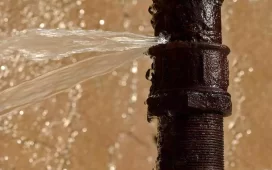Hard water is water containing an abundance of dissolved minerals (as opposed to soft water having a low dissolved mineral content). Magnesium (Mg2+) ions and Calcium (Ca2+) are found in comparatively high levels in hard water. When discussing hardness, we refer to the concentration of multivalent cations in water.
These ions enter a water supply via the process of leaching from aquifer-contained minerals (such as limestone). Calcite and gypsum are both examples of calcium-containing minerals. Dolomite, a common magnesium mineral, also comprises calcium in addition to magnesium. Rainwater and distilled water both have low ion concentrations, which give them a smooth texture. Typically, the hardness of surface water, such as lakes, rivers, and streams, is fairly low and mushy.
It was a test
The actual test is not particularly difficult. The water softener is first conditioned in accordance with the manufacturer’s requirements, and then it is regenerated using the smallest amount of salt specified by the manufacturer. A water supply with a hardness of 20 +/- 2 gpg (342 +/- 34.2 mg/L) is pumped into the water softener. When put into service, the softener is operated at the maximum flowrate that was published by the manufacturer. In order to measure the level of hardness in the water that has been softened, samples of the water are taken at regular intervals for a period of ten minutes. During the test, the water that has been softened must have a hardness that is less than 1 gpg at each of the sample points.
Why?
When first hearing about this test, one’s first thought could be to wonder why the standard actually includes a water analysis to assess whether or not a softener can function normally for a continuous period of 10 minutes. It may look as though every softener would do this, and as a result, it may seem bizarre to try to envisage circumstances in which a softener may fail this test. But before we do that, let’s analyse a few potential outcomes and see where this exercise takes us.
The objective truth
Over the course of its history, the NSF has conducted tests on a handful of softeners and found that they do not meet this standard.
The organisation has concluded that the failure is the consequence of three key variables, all of which interact with one another:
- The amount of cation exchange resin that is present in the softener is not very high.
- The minimal amount of salt that should be ingested is indicated by the manufacturer to be fairly low.
- The manufacturer has a maximum flowrate that is listed and it is fairly high.
It is plausible under these circumstances to wind up with a water softener that, after being put into action at the maximum flowrate that is claimed for it, will not create soft water for a period of 10 minutes. Even though they are in the minority in contrast to the conventional water softeners supplied, some of these softeners might really work acceptably under particular conditions where household water usage is modest. This is especially true if the softener happens to be characteristically being regenerated at a salt dose that is higher than the absolute requirement.
The NSF/ANSI Drinking Water Treatment Unit standards are able to go further into the domain of fitness for purpose of items that conform to the standards because they include test criteria, such as the softener performance test. This permits the standards to go beyond the essentials and reach farther into the area of functionality.







